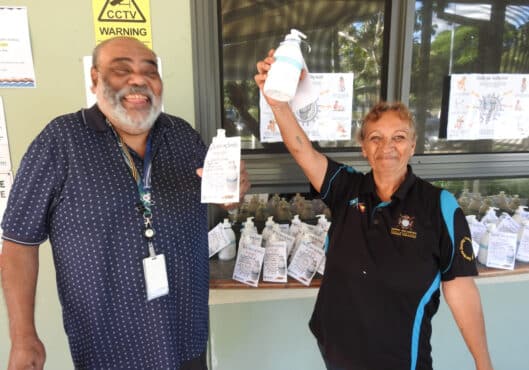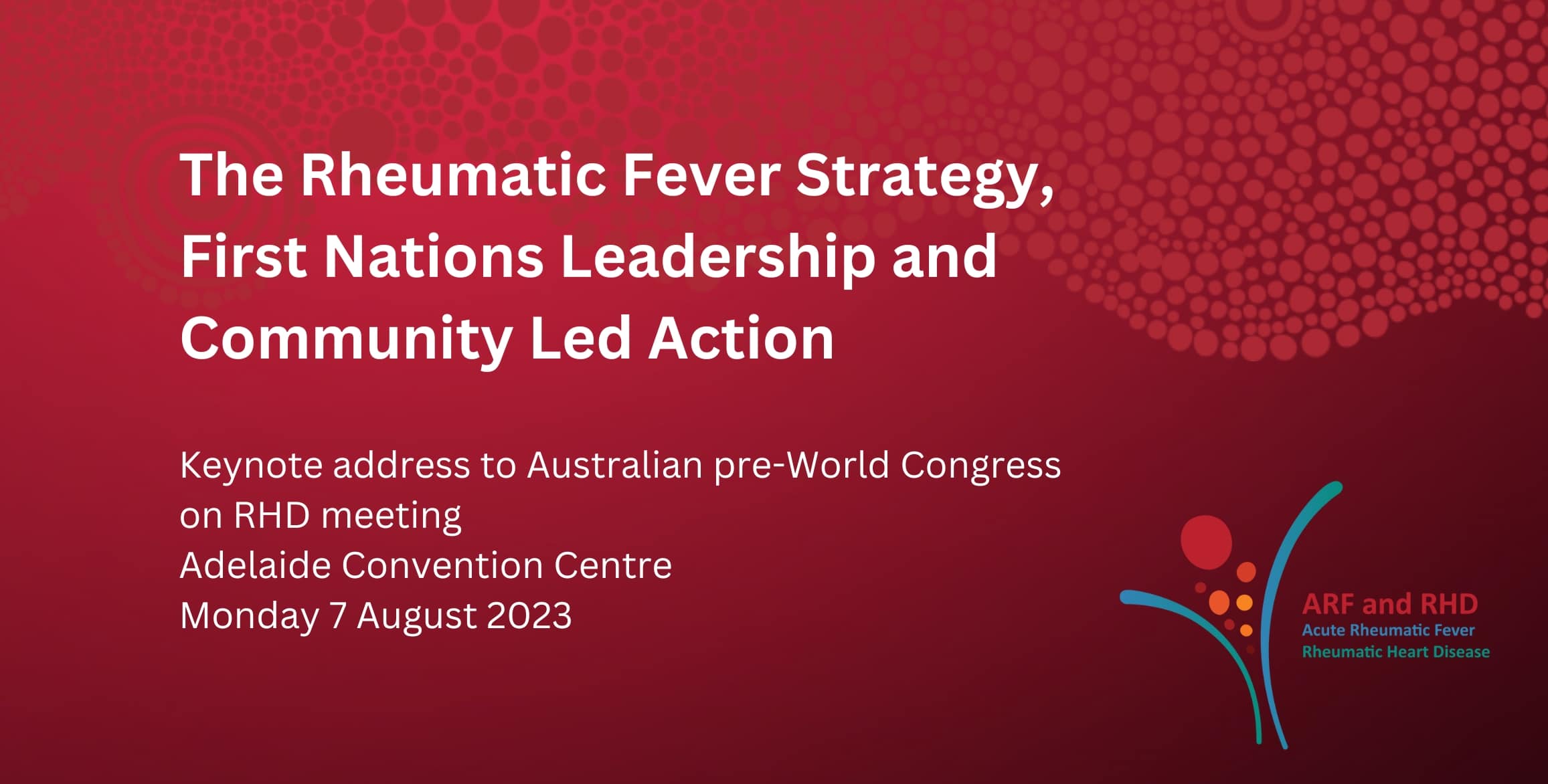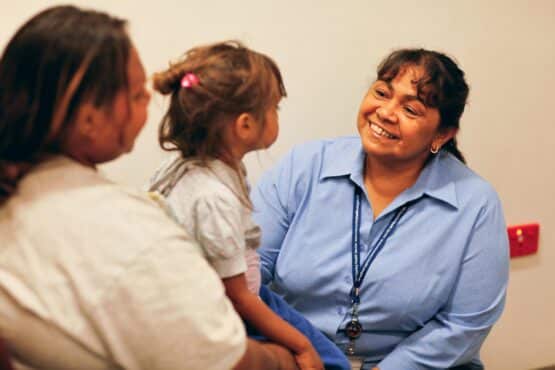

The Rheumatic Fever Strategy, First Nations Leadership and Community Led Action
Keynote address to Australian pre–World Congress on RHD meeting
Adelaide Convention Centre
Monday 7 August 2023
Good morning, everyone. I am Dawn Casey, a Tagalaka Traditional Owner from North Queensland. Like many of you, I am a visitor in Kaurna country. I acknowledge Kaurna people and their land, their wisdom and resilience. I pay my respects to Kaurna Elders past, present and emerging; and thank them for their continuing efforts in protecting and nurturing their land and culture. I also acknowledge other Aboriginal and Torres Strait Islander people who are here with us today and the leadership that you all provide to your communities, especially during this time leading up to the Voice. Finally, I would like to acknowledge my colleague Ben Mudaliar at the Department of Health and all of the speakers who are presenting today.
My thanks also to the National Heart Foundation of Australia, the Snow Foundation and Telethon Kids Institute for inviting me to speak today.
If Pat were here, she would no doubt take the opportunity to recall her own public comments way back in 2019. At that time, Pat acknowledged that RHD was the greatest cause of cardiovascular inequality for Aboriginal and Torres Strait Islander people in this country.
She spoke straight from her own heart when she said Aboriginal and Torres Strait Islander people acquire RHD through because of crowded houses and a lack of access to hot water,
to showers that work, to washing machines.
She continued that our clinics are overwhelmed with demand and sometimes skin sores and sore throats go untreated, rheumatic fever is missed and sometimes it is too late for treatment.
At the time, Pat made it very clear that NACCHO became a founding partner of END RHD not because this disease is a simple fix, but because it is hard. Because it spans from housing to clinics to open heart surgery and exemplifies the gaps in the health system and in outcomes.
Like Pat in 2019, I can say without any fear of contradiction that NACCHO is focusing on this disease because the only possible solution is a comprehensive, Indigenous-led, primary care-based strategy of both prevention and treatment.
At the launch of the RHD END Game Strategy in September 2020, Pat said “We know what needs to be done, and we know that it can be done”.
Many of you in this room were key contributors to that Strategy.
It has provided the Aboriginal and Torres Strait Islander community-controlled health sector with the ready access to evidence that we need, to get this job done.
So, what are we doing across the community-controlled sector?
I’ll go through funding, prevention and tertiary care partnerships and I’ll conclude with some ideas about strategic research.
To begin, a few words about funding.
NACCHO commends the Commonwealth for committing to a new approach to ARF and RHD in partnership with Aboriginal and Torres Strait Islander communities.
We have now embarked on the first-ever Aboriginal and Torres Strait Islander Sector-led initiative based on self-determination to combat Acute Rheumatic Fever (ARF) and Rheumatic Heart Disease (RHD) across the country.
To our knowledge, this partnership is a global first.
The joint approach led by NACCHO and the Commonwealth now prioritises investment in communities and on the ground action. Our service development grants are distributed according to need.
NACCHO’s approach acknowledges that prevention is better than cure, and that efforts designed to prevent ARF and RHD in Aboriginal and Torres Strait Islander communities are best placed in the context of comprehensive and culturally safe primary health care.
Funding is sufficient to enable ACCHOs to employ local health care workers properly qualified to design and implement local approaches to environmental health and prevention activities.
Through this community of practice, participating ACCHOs can improve local early detection, treatment and management as part of their comprehensive primary health care model.
You might already be aware that NACCHO has also received funding from the Commonwealth as part of an election commitment in 2022 to broaden training opportunities in hand-held echocardiography. Equipped with this skill, primary health care staff will be able to target at-risk groups within their communities and send images to cardiology services for diagnosis and advice regarding remote clinical management that will be implemented in primary care.
I’ll return to this clinical issue later but first let me comment on primordial prevention and ARF prevention.
Our people are experts in primordial prevention. We have known the links between human health and the environment for millennia. But has anyone actually listened?
Jonathan, when you spoke at our conference in Darwin in 2019, your slides contained an incredibly useful analysis of how to reduce initial ARF.
This analysis was included in the END RHD Strategy (Table 11, page 290). With no additional strategies as you had said, we would tick over to nearly 6,000 new cases of first ARF. By combining housing, health promotion and primary health care, we would prevent 69.2% of these cases. The entire cascade of morbidity and mortality would be prevented. Nothing else beats this integrated combination.
This is top of mind for NACCHO. Structural reform that improves the circumstances of life, opportunities ahead and self-determination.
At the same time, NACCHO must maintain a steady eye on the clinical side of ARF and RHD.
This takes us to secondary prophylaxis and whole-person care. This is the one audience that doesn’t need me to talk about rates of secondary prophylaxis!
But there are several important points to make.
Earlier this year, results were published about the four RHD Registers. The primary focus was to determine whether progression from “first ARF or mild RHD” to “recurrent ARF or severe RHD/death” after two years on the respective RHD Register had changed as RHD Registers clicked into action.
Sadly, there was no shift.
Chances of a recurrence of ARF within two years of being registered remain the same.
Of course, it is encouraging that there were statistically significant increases in Secondary Prophylaxis by injection over time. BUT – in absolute terms – these remain abysmal. In 2021, there were nearly 2000 people who received less than 50% of their due injections – including more than 500 who didn’t receive any!
I know from personal experience how painful these injections are.
Admittedly, this might have been a particularly tough year with the impact of COVID-19 on the health system generally. AMSANT is working out what happened in the community-controlled sector. While I am keen to hear the results of this project, there’s a lot we already know.
In recent research identifying strategies to strengthen prevention in primary care, there were some very quotable quotes:
One said “I think the awareness in the remote NT of this issue is already very high and I don’t think that further education is a high priority in this context”
Another said “.. most staff are very proactive about treatment, however access to services, waiting times and staff shortages are the biggest barriers”.
This person continued “…telling overworked primary health care staff what they already know and are trying their best to achieve” was counterproductive.
As Pat has told us, this is HARD work. It will not go away without structural reform.
I really must emphasise the importance of context in this regard.
In that recent article about the RHD Registers, there were some extraordinary findings about the people actually on the Registers.
I find it interesting that epidemiologists split populations into five socioeconomic quintiles. All things being equal, 20% of a population would be in each quintile.
But what did we learn about the cohort in the RHD Registers? More than 70% were in the lowest quintile! In the Northern Territory, 81% of people with RHD on the NT Register are in the lowest quintile.
These people on the Registers are the poorest of the poor.
…. and they have the heaviest disease burden. Let me explain.
James Doran is doing some sensational research. As a GP at Gurriny Yealamucka Health Services Aboriginal Corporation in Yarrabah, James is a member of our Expert Working Group.
James has looked at the bigger picture by examining the medical records of 342 Aboriginal patients with RHD in the NT. The overall 10-year survival was only 70% and lower in those needing valve replacement. Seventy-three percent (73%) had at least 1 preoperative comorbidity. Preoperative comorbidity was significantly associated with earlier death. Every additional comorbidity increased this risk.
If ever there was a reason for comprehensive primary health care that focused on the PERSON AND THEIR CONTEXT – not just the RHD – this would be it.
The wrap-around care the sector should be funded to provide is the answer.
Now allow me a few comments about RHD care and treatment in hospitals.
I hope we can work together to elevate cultural safety in cardiothoracic services as an exemplar of structural reform in the hospital sector.
To be honest, this doesn’t seem to me to be a huge task.
Let’s do the math.
In an average year, there are about 125 admissions for RHD-related cardiothoracic surgery across Queensland, Western Australia, South Australia and the Northern Territory combined.
These procedures are carried out entirely in tertiary referral hospitals. There is every reason to expect these admissions to be exemplars of culturally safe care.
Yet this is not the case.
I must be blunt – and I give my apologies to those of you who try to do your best, working in hospitals but our people do not trust the hospital system. They are not being serviced effectively by it – we know this is largely due to a lack of cultural safety.
Some acknowledge this as institutional racism. As part of another peak group of which I am a member, we asked for a national audit of institutional racism in Primary Health Networks. NACCHO can’t do this work alone. Everyone has a role in this.
You might know about the statistics for discharge against medical advice. In NACCHO, our term for this is “failure to complete care”.
Our people vote with their feet, and the rate of failure to complete care for Aboriginal and Torres Strait Islander people is increasing.
One in every 25 hospital admissions ends with an Aboriginal and Torres Strait Islander patient ending care early – that’s over 5 times more than other Australians.
The rate is highest in remote and very remote regions – in the Northern Territory, almost one in 10 admissions ends with the patient leaving early. These patients are more likely to end up readmitted and have post-operative complications, increased morbidity and mortality, and increased healthcare expenditure.
Reform of the National Health Reform Agreement for Hospitals should ensure accountability for the improvement in care of our people, with genuine input by our sector.
We look to the tertiary health system to address its shortcomings.
It must. James Doran’s research also showed that long-term survival of Aboriginal people having RHD valve replacements in the Northern Territory has not improved from 1964.
This is very sobering. I understand AMSANT has raised this priority with the Heart Foundation because you are a credible and influential charity. We join you in those efforts.
I’d like to turn now to health care for pregnant women.
NACCHO staff tell me it’s difficult to get a handle on the scope of this issue. From research published by Liz Sullivan, we estimate there must be about 100 pregnancies with Aboriginal or Torres Strait Islander women with RHD across the country in any one year.
Women who are contemplating pregnancy or are pregnant are best to receive their antenatal care through a multidisciplinary team in primary health care.
In this, the sector is ready to step up. As I mentioned, NACCHO has funding for sector use of echocardiography. There has been considerable enthusiasm for RHD echocardiography in this context, ensuring that young women with RHD are known well before they fall pregnant and that their pregnancy care is holistic and evidence-based.
As mentioned at the beginning of my remarks, we already know a lot in terms of evidence and the national agenda now is implementation.
However, there are some vital research questions.
I do want to mention one or two issues that do need more collaborative research.
I sense the excitement from the results of the Uganda echo screening trial. I am curious that half of those with borderline RHD in the control group who received no intervention at all nonetheless had regression of their RHD over two years. To a layperson, that seems quite the mystery to me and I hope you are all trying to work that out.
Another issue that comes up from our member services is about Point-Of-Care-Testing. Of course, this was a huge boon for the sector and the communities we serve during COVID. This built on our experience with Point-Of-Care-Testing in syphilis. Like the initial development of POCT for syphilis, Strep A POCT is causing some debate. We are keen to hear more about Point-Of-Care-Testing for Group A Strep and whether it is worth the cost.
To wrap up, I am delighted to have had the opportunity in this keynote address to share with you how different the RHD policy and practice landscape is today.
Aboriginal and Torres Strait Islander people – and their peak bodies – ARE taking the lead. It’s not easy but we need to. Sustainability requires embedded community control.
However, my final message to you is even more fundamental.
It remains a profound denial of human rights that Aboriginal and Torres Strait Islander communities continue to have high rates of syphilis, ARF and RHD, and in the last 12 months, two people have died from TB.
As clearly stated on page 76 of the Endgame resource, strategies to reduce Strep A, ARF and RHD are more appropriately described as fundamental human rights, including access to adequate housing and health care.
Fulfilment of these rights does not require evidence of an association with Strep A, ARF and RHD in order to be prioritised.
It doesn’t need anyone to ‘prove’ it.
The right to housing is enshrined in a number of international instruments, including Article 25 of the Universal Declaration of Human Rights.
Each and everyone of you has a part to play. If you’re not out there advocating for better social housing for Aboriginal and Torres Strait Islander communities, then I am sure that Dr Lorraine Anderson will convince you even more!
Dr Lorraine is the Aboriginal Medical Director of Kimberley Aboriginal Medical Services. She is a member of our Expert Working Group and a member of the CDNA. Lorraine has a deep and direct experience of our service development approach on the ground and is here to provide her perspective as a busy clinician and Aboriginal woman.

